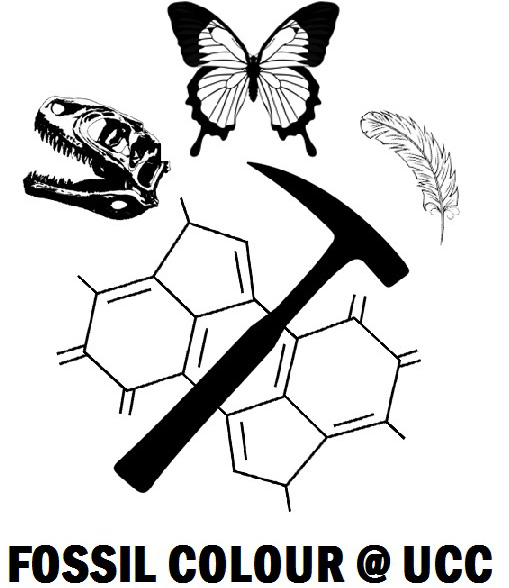News
Fossil melanosome chemistry unlocks anatomy of extinct vertebrates
UCC palaeontologists have discovered a new way of reconstructing the anatomy of ancient vertebrate animals by analysing the chemistry of fossilized melanosomes from internal organs.
[caption id="attachment_3217" align="alignleft" width="300"]
 Fig. 1. 10 million year old fossil frog from Libros, Spain and X-ray map showing elevated levels of copper and zinc in the internal organs. Fossil photograph copyright the Natural History Museum, London. X-ray fluorescence map copyright Valentina Rossi.[/caption]
Fig. 1. 10 million year old fossil frog from Libros, Spain and X-ray map showing elevated levels of copper and zinc in the internal organs. Fossil photograph copyright the Natural History Museum, London. X-ray fluorescence map copyright Valentina Rossi.[/caption]
Until recently, most studies on fossil melanin have focussed on the skin and feathers, as here the pigment is linked to visible colour. Unexpectedly, the new study shows that melanin is also abundant in internal organs of modern amphibians, reptiles, birds and mammals, and their fossil counterparts.
The study, published today in the journal Proceedings of the National Academy of Sciences USA, is led by UCC’s Valentina Rossi and her supervisor Dr Maria McNamara in collaboration with an international team of chemists from the USA and Japan. The team used cutting-edge synchrotron techniques to analyse the chemistry of the fossil and modern melanosomes using X-rays.
The team made the initial discovery of internal melanosomes last year on fossil frogs. ‘After the pilot study, we had a hunch that these features would turn out to be more widespread across vertebrates. But we never guessed that the chemistry would be different in different organs,’ said Ms Rossi.
[caption id="attachment_3221" align="alignright" width="300"] Fig. 2. 10 million year old fossil tadpole from Libros, Spain and X-ray map showing elevated levels of titanium in the skin, eye and especially the liver. X-ray fluorescence map copyright Valentina Rossi.[/caption]
Fig. 2. 10 million year old fossil tadpole from Libros, Spain and X-ray map showing elevated levels of titanium in the skin, eye and especially the liver. X-ray fluorescence map copyright Valentina Rossi.[/caption]
‘This discovery is remarkable in that it opens up a new avenue for reconstructing the anatomy of ancient animals. In some of our fossils we can identify skin, lungs, the liver, the gut, the heart, and even connective tissue’ said senior author Dr McNamara. ‘What’s more, this suggests that melanin had very ancient functions in regulating metal chemistry in the body going back tens, if not hundreds, of millions of years.’
This study would not have been possible fifteen years ago: ‘The advent of new synchrotron X-ray analysis techniques allows us to harness the energy of really fast-moving electrons to detect minute quantities of different metals in the melanosomes,’ said collaborator Sam Webb. ‘The fossils are so well preserved that even the melanin molecule can be detected,’ said collaborators Sho Ito and Kazumasa Wakamatsu from Japan.
The study was published today in PNAS: Rossi, V., McNamara, M.E., Webb, S., Ito, S., Wakamatsu, K., 2019. Tissue-specific geometry and chemistry of modern and fossilized melanosomes reveal internal anatomy of extinct vertebrates. PNAS, in press. DOI: doi.org/10.1073/pnas.1820285116.
See below for news items on the study:
https://m.phys.org/news/2019-08-scientists-reconstruct-extinct-animals.html
https://www.dailystar.co.uk/news/latest-news/real-life-jurassic-park-prehistoric-18973798
https://www.popularmechanics.com/science/a28659401/extinct-animal-reconstuction-technology/
https://www.corkbeo.ie/news/local-news/ucc-scientists-discovered-new-way-16785323
https://soundcloud.com/kfmradiokildare/kildare-today-21-08-19-hour-2 (Valentina's interview starts at 25:20!)
https://www.msn.com/en-ca/news/technology/how-colour-shaped-dinosaurs-lives/ar-AAGOa0d
Evening Echo extinct vertebrate chemistry article
Irish Daily Mirror extinct vertebrate chemistry article


